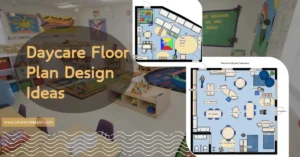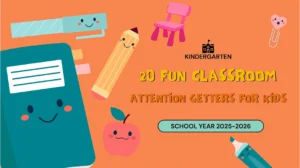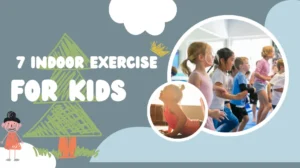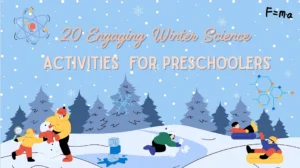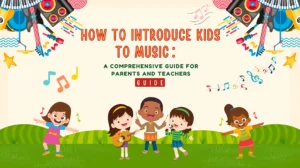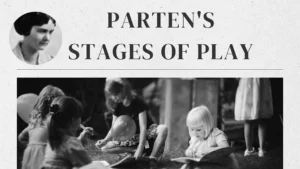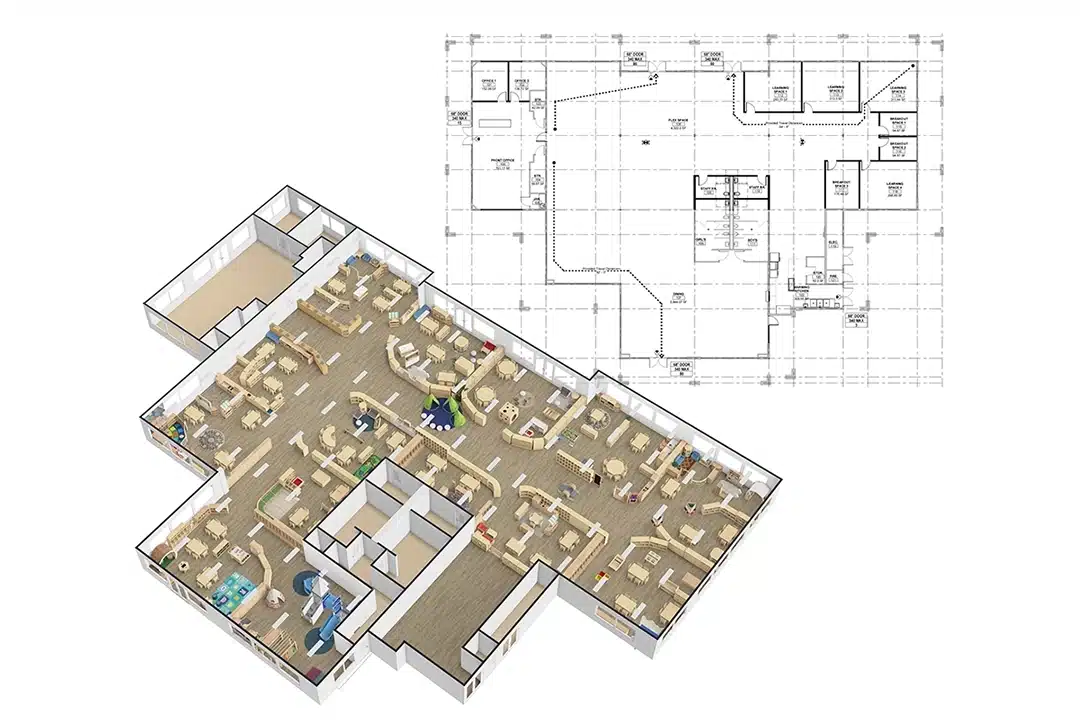Managing preschool nap time can feel like walking a tightrope. Some kids fall asleep in minutes, others toss and turn, and a few might refuse to rest at all. You’ve followed the schedule, dimmed the lights, played calm music—but still, nap time isn’t going smoothly.
When nap time becomes a daily struggle, it impacts the entire classroom. Tired kids get cranky, noise levels go up, and teachers are left juggling rest time with behavior issues. It’s stressful, unpredictable, and frustrating.
But it doesn’t have to be that way. With a clear nap time policy, a consistent routine, and the right strategies, preschool nap time can become one of the calmest parts of the day. Whether you’re dealing with short naps, restless kids, or just wondering how long nap time should be at preschool, this guide will help you make it all easier—for both you and your students.
Introduction
Preschool nap time plays a bigger role in a child’s day than many people realize. It’s not just about taking a break—it’s about giving young kids the quiet time they need to rest, recharge, and reset. For preschoolers, a good nap helps them manage emotions, stay focused in the afternoon, and even remember what they learned earlier in the day.
But as simple as it sounds, nap time isn’t always easy to get right. How long should nap time be in preschool? What if some kids don’t fall asleep at all? What’s a typical nap time schedule, and how do schools decide on nap time policies that actually work?
This guide breaks it all down. We’ll walk through the most common preschool nap time requirements, share real tips for teachers and parents, and explain how to handle kids who struggle with rest. Whether you’re trying to figure out what time nap time happens, how to support non-nappers, or what the best nap time length is, you’ll find clear answers here.

Why Is Nap Time Important in Preschool?
Preschool nap time is more than just a moment of quiet—it’s a key part of a child’s daily routine that directly supports their mental, emotional, and physical development. For kids between the ages of 3 and 5, sleep is still essential during the day. That’s why many preschools make nap time a required part of the schedule.
So, why do preschoolers get nap time, and why do preschools have nap time built into their day?
Naps Help With Brain Development
During sleep, young children’s brains go to work. They process the things they’ve learned in the morning, organize memories, and build stronger neural connections. Studies show that preschoolers who nap regularly perform better on memory and learning tasks. Even a short nap can make a difference in how well they absorb and retain new information.
If a child is learning to count, recognize letters, or follow directions, sleep helps those skills “stick.” Without enough rest, children may become forgetful or easily distracted.
Nap Time Supports Emotional Regulation
Ever seen a preschooler melt down over a broken crayon? That’s often what happens when a child is overtired. Regular rest helps children regulate their feelings better. Kids who get a consistent nap are less likely to be irritable, overwhelmed, or overly energetic late in the day.
In a preschool classroom, that emotional balance creates a better learning environment for everyone. One child’s exhaustion can quickly turn into a group-wide energy spike—and that can derail an entire afternoon.
It’s a Break From Stimulation
Preschool mornings are full of action: art time, story circles, singing, puzzles, and play. All that activity can be exhausting for young minds. Nap time gives children a chance to reset.
Even if some kids don’t fall asleep, quiet rest still matters. It helps them slow down, process the day so far, and prepare for the next round of activities.
That’s why many schools implement preschool nap time policies that give every child a rest period—whether or not they choose to sleep.
Naps Promote Physical Growth
While kids are napping, their bodies are working behind the scenes. Growth hormones are released during sleep, helping muscles and tissues develop. This is especially important in early childhood, when the body is growing rapidly.
Skipping naps too often can lead to slower recovery from illness, weakened immunity, and even slower physical growth over time.
Rest Time Builds Healthy Habits
By sticking to a daily nap time schedule, preschools help children form habits that support long-term health. When children learn to rest at a regular time each day, it teaches their bodies when to wind down—even at home.
As they grow older and eventually drop naps, that understanding of rest becomes the foundation for healthy sleep patterns later in life.
Teachers Benefit, Too
Let’s not forget—preschool nap time is also important for educators. It provides a short window to prep for the afternoon, check in with individual children, and even take a mental breather. A well-managed nap time helps teachers stay organized, refreshed, and more present with their students throughout the day.


What Are the Preschool Nap Time Requirements?
When it comes to preschool nap time, many people assume each school just does what it wants—but that’s not the case. In reality, preschools are often guided by clear rules set by governments, licensing bodies, and school systems. These nap time requirements help make sure young children have a safe, calm, and consistent place to rest, especially in full-day programs.
Let’s take a closer look at how different countries like the United States, Canada, and Australia set these rules—and how schools put them into practice.
What Do Nap Time Requirements Actually Mean?
In simple terms, nap time requirements are rules that tell schools:
- When nap time should happen
- How long children should rest
- What teachers need to provide (like individual mats or supervision)
- What to do if a child doesn’t sleep
These rules protect children’s health and help teachers maintain a peaceful classroom. Most importantly, they make sure nap time is fair, respectful, and helpful for all preschoolers—whether they sleep or not.
United States: Nap Time Laws Vary by State
In the U.S., each state has its own rules for licensed preschool and daycare programs:
- California: Children in care for over 6 hours must be offered a nap or rest period. If they don’t sleep after a certain time (usually 20–30 minutes), they may do quiet activities. Cots or mats must be spaced apart and cleaned regularly.
- Texas: Rest time is required for full-day care, and individual bedding is mandatory. Teachers must supervise nap time at all times.
- New York: Schools must provide a rest area with dim lights, low noise, and staff supervision. Nap time often ranges from 1 to 2 hours.
While not every preschool will use the exact same nap time schedule, most offer rest around midday, especially for kids under five.
Canada: A Balanced, Child-Led Approach
In Canada, nap time guidelines are set by each province. Though similar to the U.S., there’s often more flexibility based on children’s needs:
- Ontario: All licensed child care centers must offer at least one rest period per day for full-time attendees. Children who don’t fall asleep are encouraged to rest quietly and may engage in individual, calm play.
- British Columbia: Nap or rest must be offered in full-day programs. Teachers must track children’s sleep and maintain a rest log.
- Quebec: Most full-day preschools offer a set nap block after lunch, around 12:30 to 2:00 PM, though some opt for “quiet time” if the group is older.
In general, Canadian preschool nap policies emphasize flexibility and allow for a “child-led” rhythm. Teachers are trained to respond to individual needs instead of enforcing one-size-fits-all sleep rules.
Australia: Rest Is a Right, Not a Requirement
Australia takes a unique approach to nap time. According to the National Quality Framework (NQF) and Early Years Learning Framework (EYLF):
- Rest and relaxation must be available to every child during the day.
- Children cannot be forced to sleep or lie down for extended periods if they’re not tired.
- Nap time should be built around each child’s natural rhythm and cultural background.
- Teachers are expected to observe signs of tiredness and adjust accordingly.
In practice, this means Australian preschool programs often allow for flexible nap blocks, with some children sleeping, others resting quietly, and some engaging in solo calm activities. Rest areas are typically kept quiet, dim, and comforting—but without pressure.
How Schools and Teachers Apply These Rules
No matter the country, once nap time laws or policies are in place, schools must put them into action. This usually means:
- Creating a clear daily nap time schedule (e.g. 12:30 PM–2:00 PM)
- Providing individual sleeping spaces (mats, cots, or nap beds)
- Supervising children at all times
- Offering quiet alternatives for non-nappers (books, puzzles, drawing)
- Keeping records of children’s sleep duration and behavior
Some schools also use nap time signs or visuals to help kids understand it’s time to rest.
What If a Child Doesn’t Nap?
This is where the rules show their flexibility. In most systems:
- Children who don’t fall asleep within 20–30 minutes can move to quiet play.
- Teachers encourage calm behavior without pressuring children to sleep.
- The focus is on giving everyone a break, even if they don’t nap.
It’s about balance—offering rest, respecting individuality, and keeping the room peaceful.
Why These Rules Matter
Without nap time regulations, each classroom could approach rest in drastically different ways—some too strict, some too relaxed. Having clear preschool nap time requirements helps ensure:
- Children get the rest they need
- Teachers have consistent routines
- Families understand what to expect
- Classrooms stay calm and structured

How Long Is Nap Time in Preschool?
When it comes to preschool nap time, one of the most frequent questions asked by both parents and new teachers is: “Exactly how long should nap time be?” While there isn’t one universal answer, most early childhood educators agree that nap time typically lasts between 60 to 90 minutes for preschool-aged children.
This window allows enough time for children to settle down, fall asleep, and get meaningful rest—without making it so long that it interferes with their nighttime sleep at home. But the best length for nap time depends on several factors, including a child’s age, energy levels, and daily routine.
How Long Should Preschoolers Nap by Age?
While most preschool nap time schedules offer 60 to 90 minutes of rest, how much each child truly needs depends heavily on their age and individual sleep habits. Here’s a more detailed age-based guide to nap time needs, from toddler stage through the end of preschool:
| Age | Typical Nap Duration | Still Napping? | Notes |
|---|---|---|---|
| 18–24 months | 90–120 minutes | Almost all | Transitioning to one longer nap; may fall asleep quickly after lunch. |
| 2–2.5 years | 90 minutes | Most | Still need naps, though occasional resistance may begin. |
| 2.5–3 years | 75–90 minutes | Most | Nap consistency starts to vary. Some may need wind-down time. |
| 3–3.5 years | 60–90 minutes | Many | May start resisting naps; rest time becomes important for behavior. |
| 3.5–4 years | 60–75 minutes | Mixed | Some children drop naps, others nap easily with routine. |
| 4–5 years | 45–60 minutes or quiet rest | Few | Most don’t nap at home, but benefit from preschool rest time. |
| 5–6 years | 30–45 minutes quiet time | Most | Naps are rare, but quiet time helps with focus and emotion regulation. |
How to Use This Guide
- Younger preschoolers (2.5–3.5) generally still nap regularly and benefit from longer nap periods.
- Older preschoolers (4–5) may not sleep but should have time to rest quietly, especially after lunch.
- By age 5–6, nap time transitions into quiet time, where children read, draw, or relax silently.
Teachers and parents should watch for signs of overtiredness: crankiness, lack of focus, or hyperactivity can all mean a child still needs daily rest, even if they fight it.
Preschools often offer a unified nap time block, but allow individual children to sleep for as long (or as short) as they need within that structure. Teachers may gently wake children after a set time to preserve their bedtime routine at home.
Why Nap Time Can’t Be “One Size Fits All”
Every child’s body is different. Some kids fall asleep in five minutes and sleep soundly for an hour. Others take 20 minutes just to settle in, and may only rest for half an hour. Still others never fall asleep but lie quietly the whole time—and that’s okay.
Preschools create nap time policies that aim for structure while still offering flexibility. A good policy might state:
- Nap time starts and ends at consistent times daily.
- Children who don’t sleep will rest quietly for the first 20–30 minutes.
- After that, they may engage in approved quiet activities.
This setup keeps the classroom environment peaceful and gives all children a chance to reset, regardless of whether they sleep.
The Purpose Behind Nap Duration
So, why is 60–90 minutes the sweet spot?
- It allows for settling time. Children usually need a few minutes to wind down after a busy morning.
- It fits within the natural energy dip most children experience in the early afternoon.
- It leaves time in the schedule for post-nap transitions, snack, and continued learning.
Too short, and children don’t get enough rest. Too long, and they may become groggy or resist bedtime later.
Adjusting Nap Time for Individual Needs
Skilled preschool teachers observe children closely to spot patterns. If a child consistently wakes up early and engages calmly in quiet play, they may be allowed a shorter rest period. Conversely, a child showing signs of fatigue or behavior issues might benefit from being gently encouraged to rest a bit longer.
Some schools also track sleep duration informally—especially if parents ask for updates to coordinate home sleep schedules.
In preschool, nap time generally lasts between 60 to 90 minutes, but what matters more than exact minutes is giving children enough time to relax, recharge, and reset. Whether a child sleeps the full time or simply rests quietly, the goal is to create a moment of calm that supports both emotional and cognitive growth.


What Time Do Preschools Schedule Nap Time?
Most full-day preschools schedule nap time between 12:00 PM and 2:00 PM, typically right after lunch. This timing isn’t random—it’s backed by both child development research and years of hands-on classroom experience.
Preschoolers tend to experience a natural drop in energy in the early afternoon, especially after a morning packed with circle time, learning centers, and active play. Scheduling nap time during this natural lull makes it more likely children will actually rest.
Typical Daily Schedule With Nap Time
Here’s what a standard preschool day might look like:
| Time | Activity |
|---|---|
| 8:30 AM | Arrival and free play |
| 9:00 AM | Morning circle and learning activities |
| 10:30 AM | Outdoor or movement time |
| 11:30 AM | Lunch |
| 12:15 PM | Bathroom and storytime |
| 12:30–2:00 PM | Nap or rest time |
| 2:00 PM | Wake up, snack, and afternoon play |
By placing nap time in this early afternoon window, schools help children recharge without interfering with family dinner or bedtime at home.
Why After-Lunch Nap Time Works
Nap time is typically scheduled right after lunch for several good reasons:
- Physiological readiness: After eating and engaging all morning, children are naturally more tired.
- Routine alignment: It fits smoothly into the flow of the day and transitions from high energy to calm.
- Digestive rest: Giving the body a chance to digest lunch in a calm state also helps with overall comfort.
Plus, children begin to associate this part of the day with calmness and recovery—a healthy pattern that can stick with them long after preschool ends.
Do All Preschools Follow the Same Nap Time?
Not exactly. While many schools use the 12:30–2:00 PM block, there are some variations:
- Some start nap time at 12:00 PM, especially if lunch is served earlier.
- Others extend nap time until 2:30 PM in quieter classrooms or programs with longer hours.
- A few offer shorter naps of 45–60 minutes, particularly in mixed-age rooms with older kids.
The start time and duration often depend on:
- The school’s total operating hours
- Age of the children in the group
- How quickly the group winds down after lunch
- Cultural norms and parental expectations
What About Half-Day Preschools?
Half-day programs that end around 12:00 or 12:30 PM usually do not include nap time. However, they may include a short “quiet story” or relaxation block to help kids transition from school to home.
Parents of children in half-day preschools are encouraged to maintain nap time at home to ensure their child still gets enough rest during the day.
Most preschools schedule nap time between 12:00 and 2:00 PM, usually right after lunch when kids are naturally winding down. The key is consistency—helping children build a reliable routine that supports their body’s natural rhythm and prepares them for the rest of the day.
Common Preschool Nap Schedule Models
Preschool nap time routines vary across different types of early childhood programs. While the 12:00–2:00 PM window is common, the way nap time is handled often depends on the school’s structure, classroom size, and teaching philosophy.
• Full-Day Center-Based Preschools
These programs typically follow a fixed daily schedule. Nap time is usually 1.5–2 hours long, with mats or cots provided in a shared nap area. Children are expected to rest quietly, whether they sleep or not.
• Half-Day Preschools
Because these programs end around noon, they often skip nap time altogether. Instead, they may offer quiet storytime or light relaxation activities before dismissal.
• Montessori Preschools
Montessori classrooms may offer a more flexible preschool nap time policy. Children rest if needed, but are not required to nap at the same time. Nap areas are available, but not always scheduled.
• In-Home or Family-Based Preschools
These settings often mimic home routines. Nap time might be more relaxed in structure but still falls in the early afternoon. Children may sleep longer, and mixed-age groups require more flexibility.
• Public or State-Funded Pre-K Programs
Public pre-K classrooms usually follow district guidelines. Nap time is standardized and supervised, often with shorter rest periods and stricter timing due to academic schedules.
While preschool nap time appears on nearly every daily schedule, how it’s implemented can look very different. Understanding these variations helps families choose the right fit and supports consistency between school and home.
How to Establish a Consistent Nap Time Routine
A predictable preschool nap time routine helps children settle down with less resistance. When rest becomes part of the daily rhythm, children feel more secure and less anxious about the transition.
• Start With Gentle Signals
Use soft cues like dim lighting, calming music, or a short story after lunch to let children know it’s time to slow down. Repeating these cues every day builds familiarity and trust.
• Keep the Sequence Simple and Repetitive
For example: finish lunch → bathroom → clean-up → storytime → lie down. When the steps don’t change, children feel in control and know what’s coming next.
• Set Clear but Flexible Expectations
Let children know they’re not required to sleep—but they must stay on their mat and remain quiet. This makes preschool nap time less stressful for both sleepers and non-nappers.
• Offer Comfort and Choice Within Boundaries
Children may bring a blanket, stuffed animal, or calming book. Some may need quiet activities while others fall asleep. Allow these options without disrupting the group.
Teachers play a vital role in reinforcing the routine. Calm reminders, consistent presence, and patient redirection help children follow expectations. Walking gently between mats, offering soft reassurance, and avoiding overstimulation go a long way in supporting a peaceful environment.
At the same time, parents can support preschool nap time from home by maintaining a steady bedtime and wake-up schedule. Sending familiar nap items like a favorite blanket or soft toy can help children feel more connected and at ease during the rest period.
Consistency is everything. When both teachers and families follow the same rhythm, preschool nap time becomes less of a daily hurdle and more of a natural pause that benefits everyone.

Tips for Non-Nappers in Preschool
Not every child sleeps during preschool nap time, and that’s completely normal. As children grow, some naturally begin to outgrow naps earlier than others. But even if a child doesn’t nap, rest time is still an important part of their day.
• Quiet Rest Time Is Non-Negotiable
Children who don’t fall asleep are still expected to stay on their mats, rest quietly, and respect the space of others. This teaches self-regulation and helps maintain a peaceful classroom during preschool nap time.
• Provide Silent, Independent Activities
After a short quiet period, non-nappers can be offered calming, solo activities such as looking at books, soft drawing, or simple puzzles. These are chosen carefully to avoid noise and motion that might disturb nearby sleepers.
• Designate a Quiet Zone If Possible
In classrooms with space, some schools create a quiet “non-napper corner” with soft seating and books. This physical separation helps reduce disruptions and gives non-nappers a defined area to settle without feeling restricted.
• Teach the Difference Between Resting and Playing
Clear guidance helps non-nappers understand: “You don’t have to sleep, but this is still a time to rest your body.” Without these reminders, children may see nap time as free play.
• Coordinate With Parents
Some children skip naps at school but nap at home, or vice versa. Teachers should communicate with parents about nap patterns, adjust as needed, and maintain consistent expectations across home and school routines.
• Use Visual and Auditory Cues
Soft preschool nap time music, dim lighting, and visual prompts like “rest time” signs help all children—including non-nappers—understand the change in pace. Over time, most children adapt naturally to the rhythm, even if they don’t sleep.
The goal isn’t to force every child to nap—it’s to protect quiet space for those who need rest while offering respectful, calm alternatives for others. With the right approach, even non-nappers can benefit from preschool nap time without disrupting the group.
Quiet Nap Time Activities for Preschoolers
Not every child falls asleep during preschool nap time, and that’s okay. The goal is to give every child a restful, quiet environment—even those who don’t nap. With the right activities, non-nappers can remain calm and focused without disturbing others.
Felt Storyboards
Provide children with a small felt board and a variety of soft felt pieces—animals, trees, people, and shapes. They can silently create scenes, tell visual stories, or sort by color and type. The texture and open-ended play promote quiet concentration.
Soft Coloring Pages
Offer a few printed coloring sheets and a small set of crayons or colored pencils. Encourage children to color slowly and stay on their mat. This simple activity helps them settle while still engaging their fine motor skills.
Reusable Sticker Books
Preschoolers love stickers. Reusable sticker books let them quietly place, remove, and reposition pieces to build scenes or match shapes. This reduces mess while keeping their hands gently occupied.
Sensory Bottles
Fill clear plastic bottles with slow-moving materials—glitter, beads, or colored water with oil. Children can shake, roll, and watch the contents settle. These bottles act like visual calm-down tools without making noise.
Quiet Puzzles
Provide small, age-appropriate puzzles (6–12 pieces) made of cardboard or foam. Children complete them independently on a tray or mat. This activity encourages quiet problem-solving and builds focus.
Threading and Lacing Cards
Give children large, soft lacing cards and thick shoelaces. They can thread the lace through pre-punched holes at their own pace. It’s quiet, soothing, and great for developing coordination.
Personal Picture Books
Let each child keep a “quiet book” with photos from home or laminated classroom pictures. Looking through familiar images offers emotional comfort during preschool nap time, especially for non-nappers.
Magnetic Drawing Boards
These erasable sketch pads allow children to draw with a stylus and wipe it clean with a sliding lever. There’s no mess, no noise, and kids love the tactile feedback.
Color Sorting Activities
Place soft pom-poms or paper chips in a small tray along with matching color cups. Children quietly sort by color or size. The repetitive motion is relaxing and keeps their attention gently engaged.
Listening Station (With Headphones)
Set up an MP3 player or tablet with preloaded preschool nap time music or gentle audiobooks. Provide padded child-safe headphones. This allows a peaceful listening experience without disturbing sleepers.
Laminated Matching Games
Create simple card sets where children match animals, shapes, or colors. Use Velcro or magnets to reduce sound. These games help build early learning skills without requiring interaction.
Breathing and Stretch Cards
Introduce visual cards with simple yoga poses or breathing exercises. Children can choose a card and follow the pose while staying on their mat. These movements are gentle and help calm their bodies.
Quiet Journals
Offer a small notebook or blank journal where children can draw about their day, feelings, or anything they imagine. This encourages self-expression during preschool nap time, even for those who remain awake.
Mini Felt Manipulatives
Provide a small zip bag of felt shapes, letters, or numbers. Children can sort, arrange, and create without sound. The texture invites touch without excitement or distraction.
Shadow Drawing
Using a soft lamp or indirect window light, children can trace the shadows of toys or cutouts on paper. This quiet discovery activity blends creativity and observation.
These quiet nap time activities are specially chosen to keep non-nappers calm, content, and quietly engaged. They help maintain a peaceful environment for the entire classroom—making preschool nap time a restful experience for everyone.
Preschool Nap Time Behavior Challenges
Even with a solid routine in place, preschool nap time doesn’t always go smoothly. Young children are still learning how to manage their emotions, follow rules, and understand expectations. This often leads to challenging behaviors during rest time that require patience, consistency, and clear boundaries.
Refusing to Lie Down
Some children resist even the first step of nap time—getting on their mat. This is often a sign of overtiredness, overstimulation, or anxiety. A gentle, calm voice and quiet one-on-one redirection usually work better than stern reminders.
Talking or Making Noise
Whispering, humming, or even talking out loud can quickly disturb a calm room. Teachers often use visual reminders (like a “quiet time” card) or reinforce silence with gentle proximity—just sitting near the child can be enough to help them settle.
Restlessness or Rolling Around
Young children may fidget, wiggle, or roll off their mats. This usually happens when they’re tired but can’t relax. Playing preschool nap time music with a slow rhythm and dimming the lights further can create a more restful atmosphere.
Separation Anxiety
Some children struggle during nap time in preschool due to missing home or caregivers. This can lead to crying or clingy behavior. Allowing a familiar blanket or stuffed toy, or giving a short transitional pep talk, can offer emotional reassurance.
Disrupting Others
A few children may poke, speak to, or laugh with peers during nap time. Teachers must step in quickly but calmly, using redirection instead of punishment. Offering quiet alternatives like a personal activity tray can help avoid escalating the situation.
Frequent Bathroom Requests
Some children use bathroom breaks as an escape from resting. While you should never deny access, setting expectations (e.g., try resting for 10 minutes first) helps minimize interruptions without compromising care.
Fake Sleeping or Pushing Limits
Children may pretend to sleep while peeking, giggling, or testing rules. This behavior is often temporary and attention-seeking. Calm consistency is key: remind them of the rules, then ignore minor silliness if it isn’t disrupting others.
Behavior during preschool nap time isn’t about misbehavior—it’s about learning self-regulation. With calm strategies, clear routines, and a patient tone, most children eventually adapt and feel secure during this quiet part of the day.


Conclusion
Preschool nap time is far more than just a midday break—it’s a vital part of a child’s daily rhythm. Whether they sleep or simply rest, children benefit from the quiet pause that helps them reset, process the morning, and prepare for the rest of the day.
By building consistent routines, understanding behavioral challenges, and offering thoughtful alternatives for non-nappers, teachers and caregivers can make nap time a calm, positive experience for everyone involved. From mats and blankets to music and quiet activities, every detail plays a role in creating a peaceful atmosphere where children feel safe and supported.
When schools and families work together to respect each child’s unique needs, preschool nap time becomes more than a requirement—it becomes a reliable moment of comfort and balance in a busy, growing world.
FAQs
What is the 2-3-4 nap time rule and does it apply to preschoolers?
The 2-3-4 rule refers to awake intervals of 2, 3, and 4 hours between sleep times. It’s mostly used for babies, but the concept—spacing rest after active play—still guides many preschool nap time schedules.
Are there specific nap time rules at daycare?
Yes. Most daycares have clear rules about when children must lie down, stay quiet, and what items they can use. These rules ensure a calm atmosphere and support children’s routine needs.
What kind of nap time music do preschools play?
Soft instrumental music, lullabies, nature sounds, or white noise are common. Nap time music for preschool helps signal the body and mind that it’s time to slow down and relax.
Can children bring their own nap time blankets to daycare?
Most preschools and daycares allow or require children to bring a labeled daycare nap time blanket from home. A familiar item can help children feel secure and sleep better.
Are nap mats required in preschool?
Yes, many preschools use lightweight, easy-to-clean daycare nap time mats. Some provide them, while others ask parents to bring a mat that meets hygiene and comfort guidelines.
How do preschools manage transitions into nap time?
Teachers use songs, dim lighting, soft music, and calm stories to guide children gently into nap time. These transitions are crucial in helping children wind down emotionally and physically.
Are there signs that show when it’s nap time in preschool?
Yes. Many classrooms use visual daycare nap time signs—like picture schedules or wall charts—to help children anticipate rest time and feel more in control of their routine.
Do different cultures handle preschool nap time differently?
Absolutely. In some cultures, naps are prioritized and protected; in others, they’re phased out earlier. Preschools often adapt their nap policies to reflect family expectations and community norms.



